If you’ve ever experienced your Jeep suddenly losing power, refusing to shift properly, or displaying warning lights while barely maintaining speed, you’ve encountered “limp mode.” This safety feature, while frustrating, is designed to protect your vehicle from further damage. Understanding what triggers limp mode and how to address it can save you time, money, and the stress of being stranded on the road.
This comprehensive guide will walk you through the causes of Jeep limp mode, how to diagnose the issue, and step-by-step solutions to get your vehicle back to normal operation. Whether you’re dealing with this problem right now or want to be prepared for the future, you’ll find practical, actionable information to address this common Jeep issue.
What Is Jeep Limp Mode and Why Does It Happen?
Typical warning lights that appear during Jeep limp mode
Limp mode (sometimes called “limp home mode”) is a protective mechanism built into your Jeep’s computer system. When the vehicle’s Electronic Control Unit (ECU) detects a potentially damaging problem, it deliberately restricts engine performance and transmission function to prevent catastrophic damage.
During limp mode, your Jeep will typically experience:
- Severely reduced acceleration (often limited to 20% of normal)
- Inability to shift into higher gears (usually stuck in 3rd or 4th gear)
- Illuminated warning lights (check engine, traction control, lightning bolt)
- Rough idling or engine hesitation
- Loss of features like cruise control or normal throttle response
While frustrating, this feature is designed to allow you to “limp home” or reach a service center without causing permanent damage to your vehicle’s engine or transmission. As many Jeep owners have reported in forums, limp mode can activate in potentially dangerous situations, such as when merging onto highways or climbing steep grades, making it important to understand and address the underlying causes.
Common Causes of Jeep Limp Mode
Based on extensive research and real-world experiences from Jeep owners, several common issues trigger limp mode across different Jeep models. Understanding these potential causes is the first step toward diagnosing and resolving the problem.
1. Throttle Body Problems
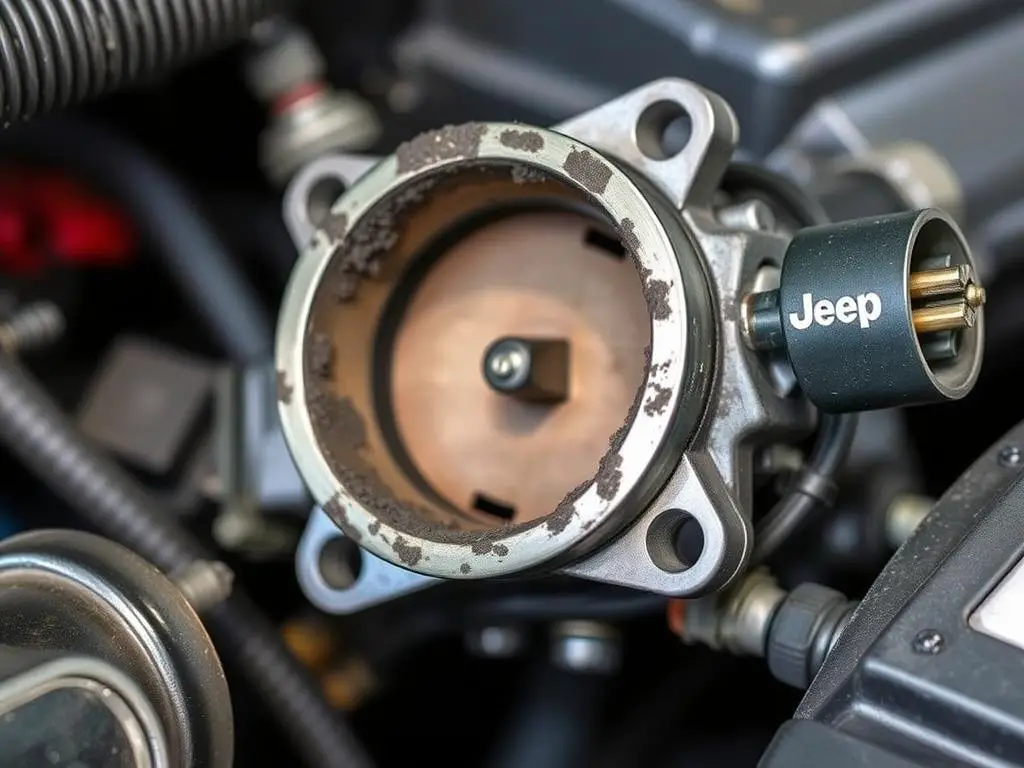
The throttle body is one of the most common culprits behind Jeep limp mode, particularly in Patriot, Compass, and Wrangler models. This component controls the amount of air entering your engine and relies on sensitive electronic components that can fail over time.
Signs of throttle body issues include:
- Hesitation during acceleration
- Rough idling or stalling
- Error codes P2101, P2119, or P2135
- Electronic Throttle Control (ETC) warning light (lightning bolt)
Many Jeep owners report immediate resolution of limp mode problems after replacing the throttle body. As one forum user stated: “Purchased a brand new throttle body and it’s like a brand new vehicle!”
Professional-Grade Throttle Body Replacement
Stop recurring limp mode issues with a high-quality throttle body replacement. Compatible with most Jeep models and designed to last longer than OEM parts.
2. Sensor Malfunctions
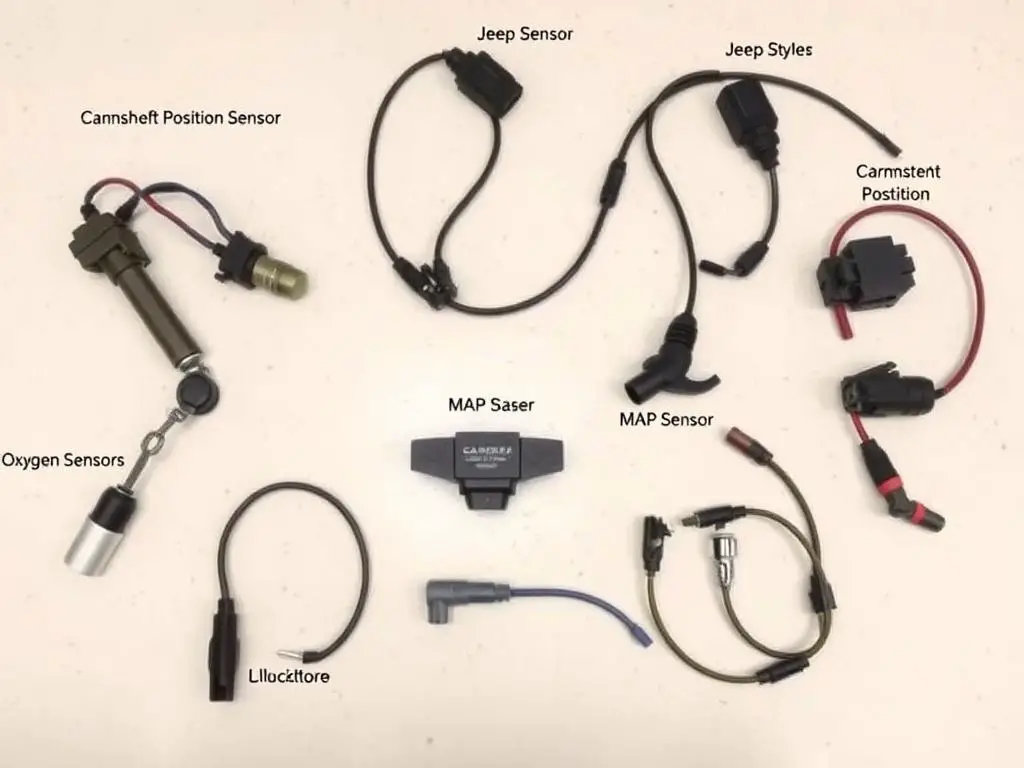
Modern Jeeps rely on numerous sensors to monitor engine performance, and when these sensors fail or provide incorrect readings, the ECU may trigger limp mode as a precaution. The most problematic sensors include:
Camshaft and Crankshaft Position Sensors
These sensors monitor the position and speed of the camshaft and crankshaft. Failure can cause misfires, stalling, and limp mode. Common error codes include P0335, P0340, P0349, and P0390.
Throttle Position Sensor (TPS)
This sensor tracks the position of the throttle plate. When it fails, your Jeep can’t properly regulate air intake, leading to performance issues and limp mode. Look for error codes P2122, P2123, P2127, and P2128.
Mass Airflow Sensor (MAF) and Manifold Absolute Pressure (MAP) Sensor
These sensors measure airflow into the engine. Failures can cause poor fuel economy, hesitation, and limp mode. Common codes include P0106, P0107, P0108, and P0171.
Oxygen (O2) Sensors
These monitor exhaust gases to help regulate the air-fuel mixture. Failures can trigger limp mode and cause poor performance. Watch for codes P0130, P0131, P0132, and P0133.
Diagnostic Scanner Tool
Identify exactly which sensor is causing your Jeep’s limp mode with this professional-grade OBD-II scanner. Compatible with all Jeep models 1996 and newer.
3. Transmission Issues
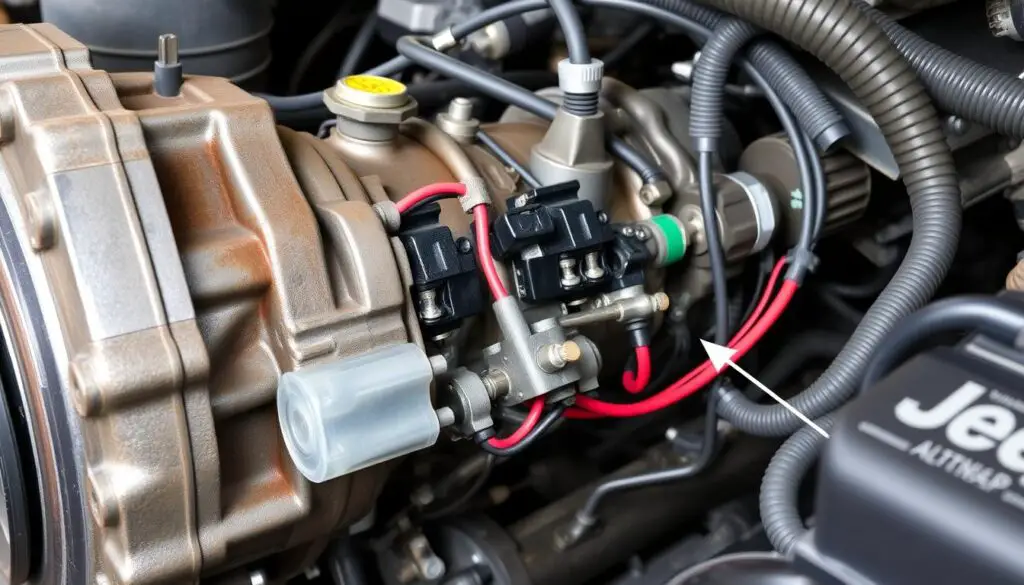
Transmission problems frequently trigger limp mode in Jeeps, especially in models with the 9-speed ZF automatic transmission. Common transmission-related triggers include:
- Low transmission fluid or contaminated fluid
- Failed solenoids or pressure sensors
- Damaged wiring harness connections
- TCM (Transmission Control Module) programming issues
- Internal mechanical failures
Transmission-related limp mode often presents with error codes in the P0700 series and may be accompanied by harsh shifting or slipping before the vehicle enters limp mode.
4. Electrical and Wiring Issues
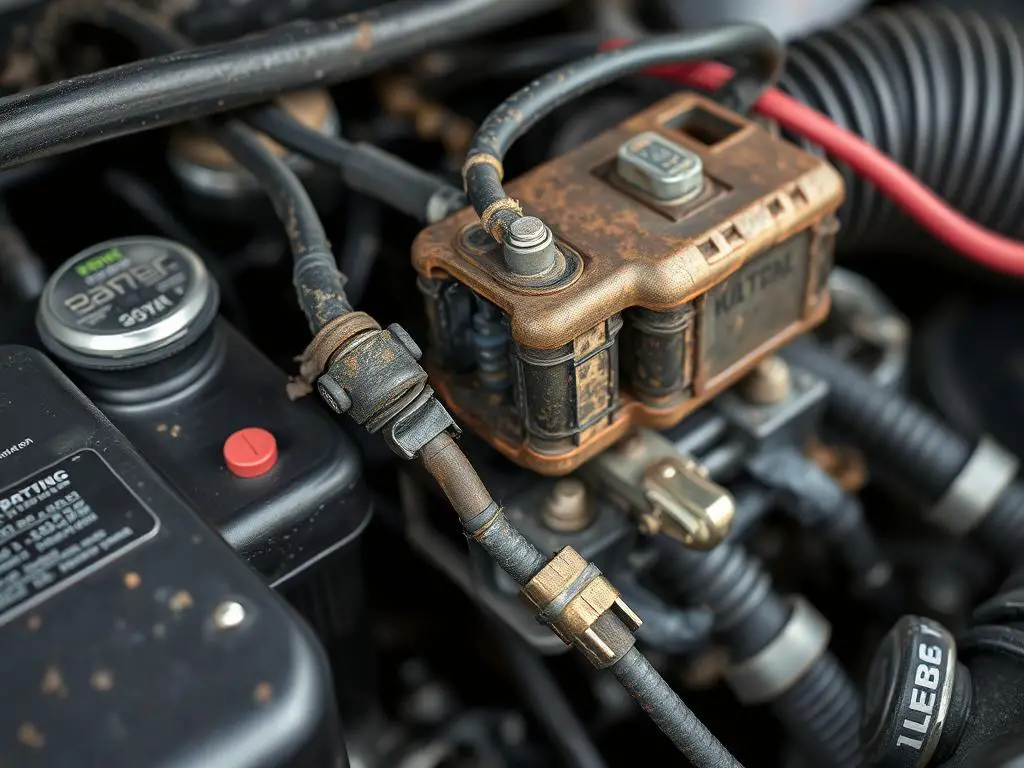
Electrical problems are among the most challenging causes of limp mode to diagnose. These issues can include:
- Corroded battery terminals or ground connections
- Damaged wiring harnesses (particularly near the engine or transmission)
- Failed relays or fuses
- Water intrusion into electrical components
- CAN bus communication errors between modules
Many Jeep owners report intermittent limp mode issues that are eventually traced to wiring problems. As one forum user noted: “We undone all the tape and the wires at that connector were melted bad.” Electrical issues often generate multiple, seemingly unrelated error codes.
5. ECU/PCM Problems
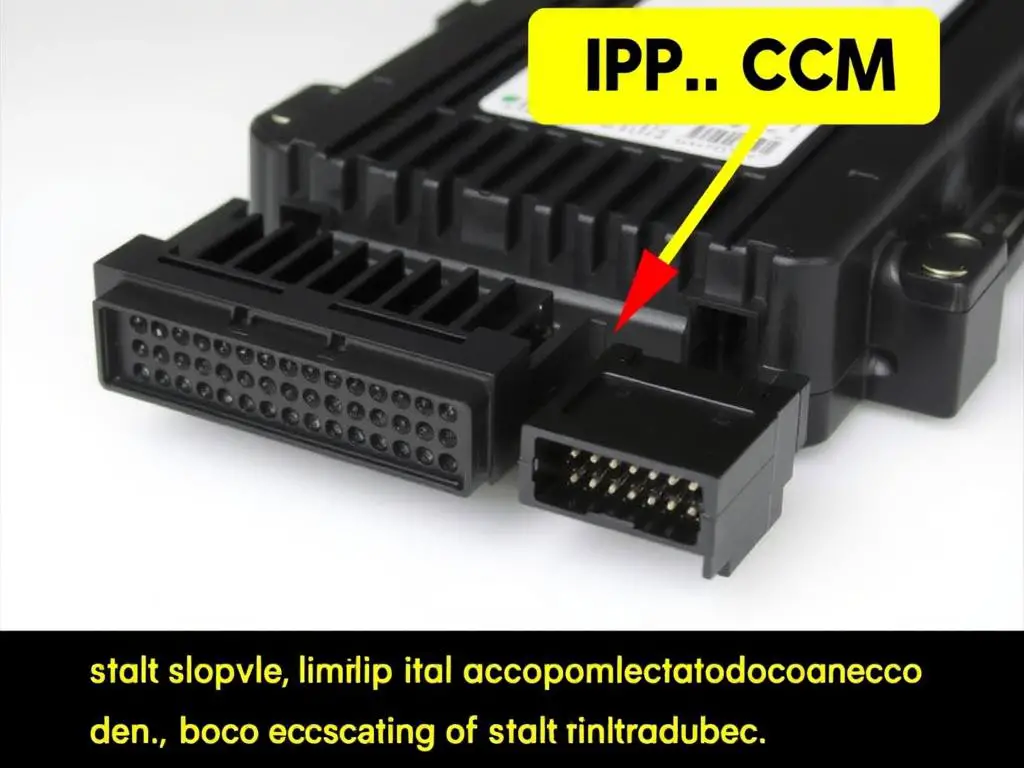
In some cases, the ECU (Engine Control Unit) or PCM (Powertrain Control Module) itself may be the culprit. Issues can include:
- Software glitches requiring reprogramming
- Failed internal components
- Corrupted calibration data
- Water or physical damage to the module
ECU/PCM issues are typically diagnosed after ruling out other potential causes, as replacement or reprogramming can be expensive. However, sometimes a simple reset can resolve temporary glitches.
How to Diagnose Jeep Limp Mode
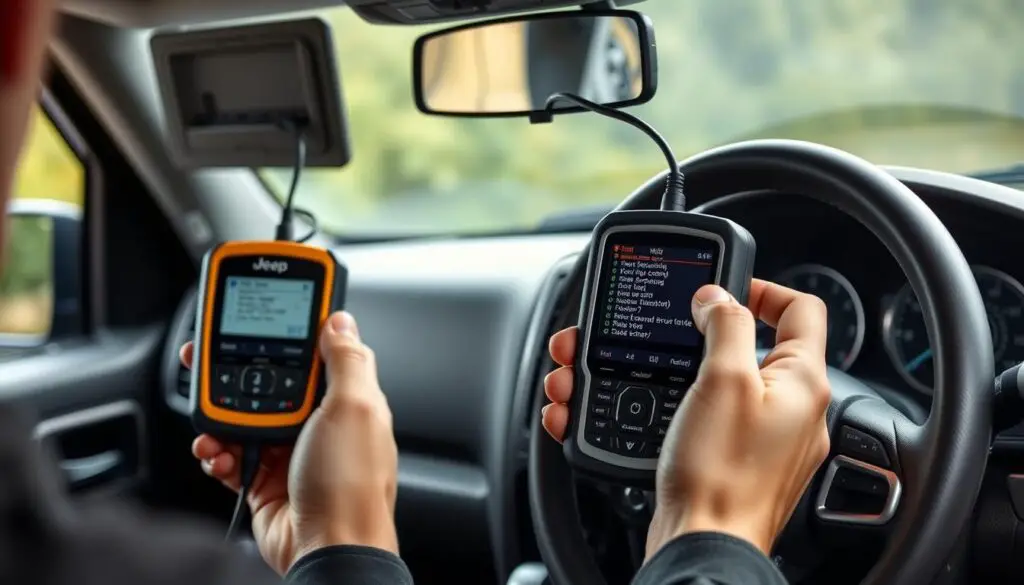
Before you can fix your Jeep’s limp mode issue, you need to determine the root cause. Follow these steps for a systematic diagnosis:
Step 1: Check for Warning Lights and Error Codes
When limp mode activates, your dashboard will typically display warning lights, including:
- Check Engine Light
- Electronic Throttle Control warning (lightning bolt)
- Traction Control Light
- Transmission Temperature Warning
These lights provide initial clues, but you’ll need to retrieve the specific error codes stored in your Jeep’s computer system using an OBD-II scanner.
Professional OBD-II Scanner for Jeep Vehicles
This advanced diagnostic scanner reads and clears error codes specific to Jeep vehicles, helping you pinpoint exactly what’s causing limp mode.
Step 2: Interpret Error Codes
| Code Range | System | Common Limp Mode Triggers |
| P0100-P0199 | Fuel and Air Metering | MAF sensor, MAP sensor, O2 sensor issues |
| P0200-P0299 | Fuel and Air Metering (Injector Circuit) | Fuel injector problems, fuel pressure issues |
| P0300-P0399 | Ignition System/Misfire | Camshaft/crankshaft position sensors, misfire detection |
| P0400-P0499 | Auxiliary Emissions Controls | EGR system, catalytic converter efficiency |
| P0500-P0599 | Vehicle Speed Control and Idle Control | Speed sensors, idle control problems |
| P0600-P0699 | Computer Output Circuit | PCM issues, communication problems between modules |
| P0700-P0799 | Transmission | Transmission solenoids, pressure switches, TCM issues |
| P2000-P2999 | Manufacturer Specific | Throttle body issues (P2101, P2135), pedal position sensors |
| U0000-U0999 | Network Communication | CAN bus errors, module communication failures |
Step 3: Visual Inspection
Once you have error codes, perform a visual inspection focusing on the implicated systems:
- Check for loose or corroded electrical connections
- Inspect wiring harnesses for damage, especially near moving parts
- Look for fluid leaks (oil, transmission fluid, coolant)
- Examine sensors for physical damage or contamination
- Check battery terminals and ground straps for corrosion
Step 4: Test Specific Components
Based on your error codes and visual inspection, test the specific components that might be causing the issue:
- Use a multimeter to check sensor resistance and voltage
- Test throttle body operation and response
- Check transmission fluid level and condition
- Monitor live data streams using an advanced scanner
- Perform pressure tests on fuel or transmission systems if necessary
How to Fix Jeep Limp Mode Issues
Once you’ve diagnosed the cause of your Jeep’s limp mode, you can implement the appropriate solution. Here are the most effective fixes for common limp mode triggers:
1. Throttle Body Solutions
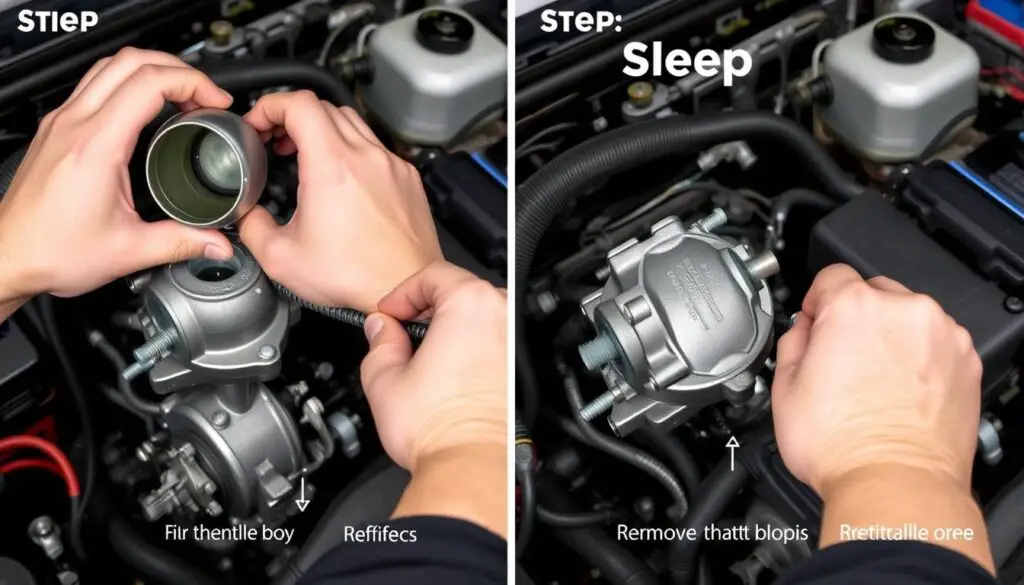
If your diagnosis points to throttle body issues, you have two main options:
Throttle Body Cleaning
For minor issues or as a first attempt:
- Disconnect the battery negative terminal
- Remove the air intake tube connected to the throttle body
- Spray throttle body cleaner on the butterfly valve and surrounding areas
- Gently clean with a soft brush, being careful not to damage the valve
- Allow to dry completely before reassembly
- Reconnect components and battery
- Perform the throttle body relearn procedure
Throttle Body Replacement
For persistent issues or when cleaning doesn’t help:
- Purchase a quality replacement throttle body (OEM or reputable aftermarket)
- Disconnect the battery negative terminal
- Remove the air intake tube
- Disconnect the electrical connector from the throttle body
- Remove the mounting bolts (typically 4 bolts)
- Install the new throttle body with a new gasket if required
- Reconnect all components and the battery
- Perform the throttle body relearn procedure
Premium Throttle Body Cleaner Kit
Professional-grade throttle body cleaner with specialized brushes designed for Jeep throttle bodies. Safe for sensors and coatings.
2. Sensor Replacement
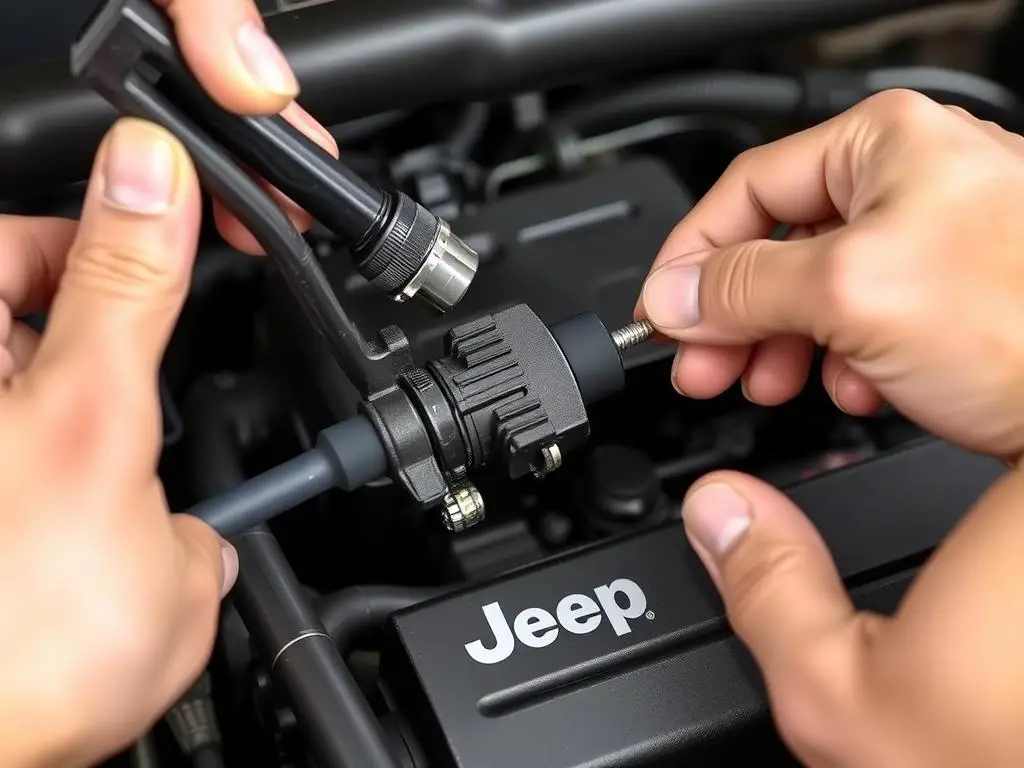
For sensor-related limp mode issues, replacement is typically the most reliable solution:
Camshaft/Crankshaft Position Sensors
- Locate the sensor (refer to your model’s service manual for exact location)
- Disconnect the electrical connector
- Remove the mounting bolt and extract the sensor
- Install the new sensor and secure with the mounting bolt
- Reconnect the electrical connector
- Clear error codes and test drive
MAP/MAF Sensors
- Locate the sensor (typically on the intake manifold or air intake tube)
- Disconnect the electrical connector
- Remove mounting screws or unclip the sensor
- Install the new sensor and secure
- Reconnect the electrical connector
- Clear error codes and test drive
Oxygen Sensors
- Locate the faulty O2 sensor (pre-catalytic or post-catalytic)
- Disconnect the electrical connector
- Use an oxygen sensor socket to unthread the sensor
- Apply anti-seize compound to the threads of the new sensor (if not pre-applied)
- Install and tighten the new sensor
- Reconnect the electrical connector
- Clear error codes and test drive
Complete Jeep Sensor Kit
This comprehensive kit includes the most commonly failed sensors that cause Jeep limp mode, all manufactured to OEM specifications.
3. Electrical System Repairs

For electrical issues causing limp mode:
Battery and Ground Connections
- Clean battery terminals using a battery cleaning tool or baking soda solution
- Inspect and clean all ground connections, particularly the main ground strap
- Check for proper voltage (12.6V when off, 13.7-14.7V when running)
- Replace the battery if it’s weak or failing
Wiring Harness Repair
- Locate damaged sections of wiring (look for chafing, melting, or rodent damage)
- Repair damaged wires using proper automotive wire and heat-shrink connectors
- Secure repaired harnesses away from heat sources and moving parts
- Consider replacing entire harness sections if damage is extensive
Connector Cleaning and Repair
- Disconnect problem connectors
- Clean with electrical contact cleaner
- Check for bent or pushed-back pins
- Apply dielectric grease to prevent future corrosion
- Replace connectors that are severely damaged or corroded
4. Transmission Fixes
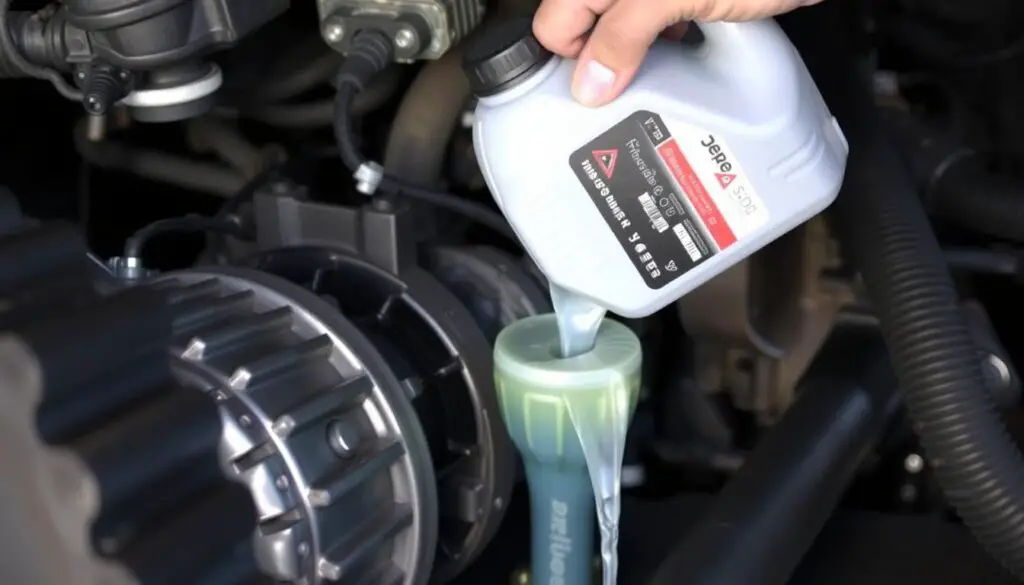
For transmission-related limp mode issues:
Fluid Service
- Check transmission fluid level and condition
- If low, top off with the correct specification fluid
- If dirty or burnt, perform a complete fluid change
- Replace the transmission filter if applicable
- Clear error codes and perform transmission adaptation procedure if required
Solenoid Replacement
This is a more advanced repair that may require professional assistance:
- Remove the transmission pan
- Locate the solenoid pack or individual solenoid
- Disconnect electrical connectors
- Remove and replace faulty solenoids
- Reinstall the transmission pan with a new gasket
- Refill with the correct transmission fluid
- Clear codes and perform adaptation procedure
5. ECU/PCM Reset and Reprogramming
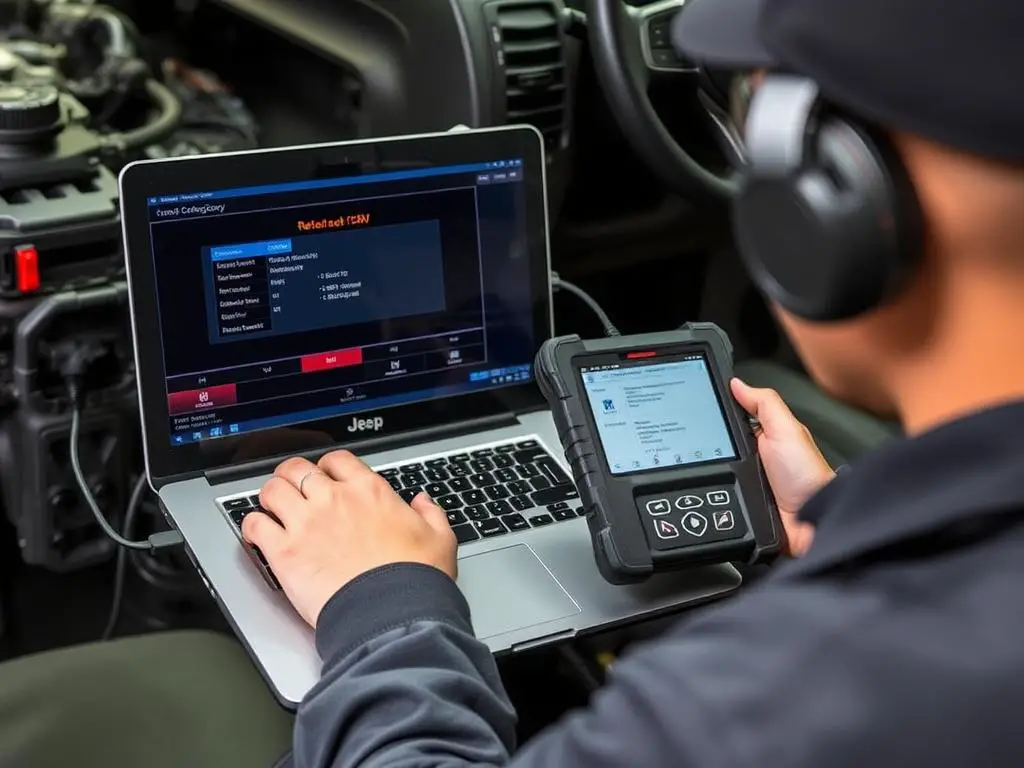
Sometimes a simple reset can resolve intermittent limp mode issues:
Basic ECU Reset
- Disconnect the negative battery terminal
- Press and hold the brake pedal for 30 seconds to drain residual power
- Wait 15-20 minutes
- Reconnect the battery
- Turn the ignition to “on” position (don’t start) for 2 minutes
- Start the engine and let it idle for 5 minutes
- Test drive to see if limp mode returns
PCM Reprogramming
For persistent issues or when software updates are available:
- This typically requires dealer-level equipment or specialized tools
- Consider visiting a dealership for the latest software update
- Some advanced scanners can perform limited reprogramming
- After reprogramming, adaptation procedures may be necessary
Preventing Future Limp Mode Issues
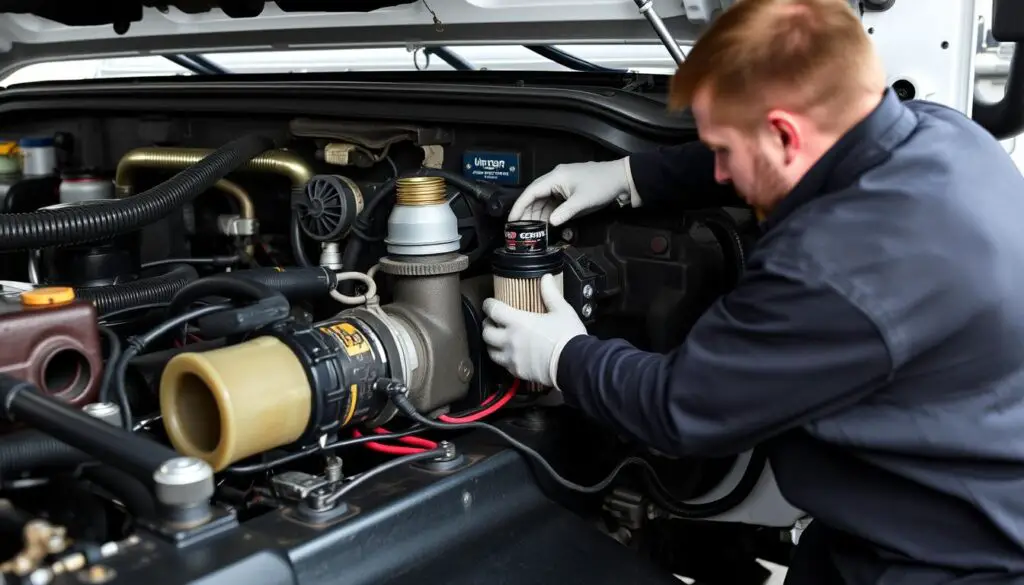
Once you’ve resolved your Jeep’s limp mode issue, take these preventative measures to reduce the chances of recurrence:
Regular Maintenance
- Follow the manufacturer’s recommended service schedule
- Change engine oil and filter regularly using the specified grade
- Service the transmission fluid at recommended intervals
- Replace the air filter to ensure proper airflow
- Clean the throttle body every 30,000 miles
- Inspect and clean electrical connections annually
Driving Habits
- Allow your engine to warm up properly before demanding performance
- Avoid excessive idling, which can lead to carbon buildup
- Don’t ignore warning lights or unusual behavior
- Address minor issues before they trigger limp mode
- Use quality fuel from reputable stations
Electrical System Care
- Keep battery terminals clean and tight
- Test your battery regularly, especially before extreme weather
- Protect wiring harnesses from heat, moisture, and physical damage
- Use dielectric grease on electrical connections in humid environments
- Consider a battery maintainer for vehicles not driven regularly
Complete Jeep Maintenance Kit
Everything you need to keep your Jeep running smoothly and prevent limp mode issues, including filters, fluids, and electrical maintenance supplies.
Jeep Models Commonly Affected by Limp Mode

While any Jeep model can experience limp mode, certain models and years are more prone to specific issues:
| Jeep Model | Years | Common Limp Mode Triggers |
| Grand Cherokee (WK/WK2) | 2005-2021 | Throttle body issues, camshaft/crankshaft sensors, transmission problems |
| Wrangler (JK) | 2007-2018 | Throttle body, wiring harness issues, CAN bus communication errors |
| Cherokee (KL) | 2014-2021 | 9-speed transmission issues, sensor problems, electrical glitches |
| Patriot/Compass | 2007-2017 | Throttle body failures, CVT transmission issues, sensor malfunctions |
| Renegade | 2015-2021 | 9-speed transmission problems, electrical issues, throttle control |
| Liberty | 2002-2012 | Throttle position sensor, O2 sensors, PCM issues |
Diesel-powered Jeeps, particularly the 3.0L EcoDiesel in Grand Cherokees, have additional potential limp mode triggers related to the emissions systems and fuel delivery components.
Frequently Asked Questions About Jeep Limp Mode
Is it safe to drive my Jeep in limp mode?
While limp mode is designed to allow you to reach a safe location, it’s not recommended for extended driving. The severely limited performance can create dangerous situations, especially when merging or climbing hills. Drive cautiously to the nearest safe location and address the underlying issue.
How do I get my Jeep out of limp mode temporarily?
In many cases, you can temporarily exit limp mode by:
- Pulling over to a safe location
- Turning off the engine completely
- Waiting 1-2 minutes
- Restarting the vehicle
This may reset the system temporarily, but the issue will likely return if the underlying problem isn’t fixed. Some owners report that disconnecting the battery for 10-15 minutes can provide a longer temporary fix.
How much does it cost to fix Jeep limp mode issues?
Repair costs vary widely depending on the cause:
- DIY throttle body cleaning: -20 for cleaner
- Throttle body replacement: 0-400 for parts, 0-200 for labor
- Sensor replacement: -200 for parts, -150 for labor
- Wiring harness repair: 0-500 depending on complexity
- Transmission repairs: 0-3000+ depending on the issue
- PCM replacement/reprogramming: 0-1200
DIY repairs can save significant labor costs if you have the necessary tools and skills.
Can a bad battery cause Jeep limp mode?
Yes, a weak or failing battery can cause limp mode in Jeeps. Modern vehicles require stable voltage for proper operation of electronic systems. Voltage fluctuations from a bad battery can trigger sensor errors and communication problems between control modules, leading to limp mode. Always check battery condition when diagnosing limp mode issues.
Will disconnecting the battery reset limp mode?
Disconnecting the battery for 15-20 minutes can reset the ECU and temporarily clear limp mode. However, this is only a temporary fix if there’s an underlying issue. The problem will return once the computer detects the same fault again. For a proper reset:
- Disconnect the negative battery terminal
- Press the brake pedal for 30 seconds to drain residual power
- Wait at least 15 minutes
- Reconnect the battery
What’s the difference between limp mode and reduced engine power?
While similar, these are slightly different protective measures:
- Limp Mode: Typically involves transmission limitations (stuck in a specific gear) along with reduced engine power. Often triggered by transmission, sensor, or major system faults.
- Reduced Engine Power: Limits engine performance but may not affect transmission shifting. Often triggered by throttle system issues or minor sensor problems.
Both require diagnosis and repair, but limp mode generally indicates a more serious issue.
Conclusion: Taking Control of Jeep Limp Mode

Jeep limp mode, while frustrating and potentially dangerous, is a protective feature designed to prevent catastrophic damage to your vehicle. By understanding the common causes, diagnostic procedures, and repair options, you can address these issues efficiently and get back on the road with confidence.
Remember that many limp mode triggers—particularly throttle body issues and sensor failures—are relatively straightforward and affordable to fix, especially if you’re comfortable with basic DIY repairs. For more complex issues involving transmission components or extensive electrical problems, professional assistance may be your best option.
Regular maintenance and prompt attention to warning signs can help prevent many limp mode scenarios before they occur. Keep your Jeep in optimal condition, and you’ll minimize the chances of experiencing this frustrating issue during your adventures on and off the road.


